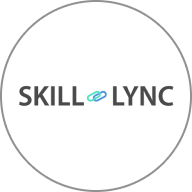Modified on
10 Jan 2025 03:39 pm
Understanding the Cooling System in Your Car

Skill-Lync
The cooling system is one of the most essential components of your car, tasked with the crucial role of preventing the engine from overheating. By regulating the engine's temperature, it ensures that your vehicle runs smoothly and efficiently, avoiding costly repairs and breakdowns. Let's explore how this system works and why its maintenance is indispensable.
How the Cooling System Works
At the heart of the cooling system is a cycle that circulates coolant—a mixture of water and antifreeze—through the engine and radiator. This process involves several key steps:
- Heat Absorption: As the engine runs, it generates a significant amount of heat. The coolant absorbs this heat as it flows through the engine's passages.
- Heat Dissipation: The heated coolant is then transported to the radiator, where it releases the absorbed heat into the air. The radiator’s fan and fins enhance this heat exchange, cooling the fluid before it recirculates.
- Temperature Regulation: The thermostat plays a critical role by regulating the flow of coolant. It remains closed when the engine is cold, allowing it to reach optimal operating temperature quickly. Once the engine warms up, the thermostat opens, permitting coolant flow to prevent overheating.
- Recirculation: The water pump ensures continuous circulation of coolant through the engine and radiator, maintaining a consistent temperature.
Key Components of the Cooling System
- Radiator: Acts as the cooling hub, where the coolant releases heat into the air. It is typically located at the front of the vehicle to maximize airflow.
- Water Pump: The driving force behind the coolant’s circulation, ensuring it moves effectively through the system.
- Thermostat: A valve that controls coolant flow based on engine temperature, opening and closing as needed to maintain optimal performance.
- Coolant: A specially formulated liquid that absorbs heat and prevents freezing or boiling in extreme temperatures.
- Hoses and Clamps: These connect various components, allowing coolant to flow throughout the system.
Importance of Maintenance
Regular maintenance of the cooling system is vital to prevent engine overheating, which can lead to severe damage such as warped cylinder heads, blown gaskets, or even complete engine failure. Here are some essential maintenance tasks:
- Check Coolant Levels: Low coolant levels can lead to inefficient heat absorption, risking overheating. Regularly check and top up the coolant reservoir as needed.
- Inspect Hoses for Leaks: Over time, hoses can develop cracks or wear, leading to leaks. Inspecting and replacing damaged hoses prevents coolant loss and maintains system efficiency.
- Radiator Maintenance: Ensure the radiator is free of debris and obstructions, which can impede airflow and reduce cooling efficiency. Periodic flushing of the radiator helps remove sediment buildup, maintaining optimal performance.
- Monitor the Thermostat: A malfunctioning thermostat can either cause the engine to run too cold or overheat. Replacing a faulty thermostat ensures the system functions correctly.
Conclusion
The cooling system is indispensable for the health and performance of your vehicle's engine. By understanding how it works and committing to regular maintenance, you can prevent overheating, enhance engine longevity, and ensure smooth operation. Remember, a well-maintained cooling system not only protects your car but also offers peace of mind on every journey.
Skill-Lync offers a wide range of industry-relevant upskilling programs to get you career-ready. Click hereto sign up for a FREE course demo right away, and let's launch your career together!
Author
Uma Maheswari K
Author

Skill-Lync
Subscribe to Our Free Newsletter

Continue Reading
Related Blogs
Explore the fundamentals of vehicle dynamics and ultimate trends in the field from design and modeling to control with Skill Lync's exclusive course on the subject. Read about how Skill-Lync's CAE courses can help you get employed.
29 Jul 2020
In this article, we will briefly discuss the working, applications, and features of the one-dimensional systematic simulation tool, GT-Power, in Emission Control Strategy, engine calibration, hybrid vehicle modeling. Read about how Skill-Lync's CAE courses can help you get employed.
29 Jul 2020
This article offers a brief introduction to the globally accepted standard of Geometric Dimensioning and Tolerancing, and its importance for the entire manufacturing process. Read about how Skill-Lync's CAE courses can help you get employed.
29 Jul 2020
In this blog we will read about Going a step into Biomechanics and how Skill-Lync's CAE course will help you get employed.
10 May 2020
The powertrain is the most prominent source of vibrations that affects the driving experience for the people on board. This blog from Skill-Lync examines these vibrations to help enhance that experience.
22 Aug 2020
Author

Skill-Lync
Subscribe to Our Free Newsletter

Continue Reading
Related Blogs
Explore the fundamentals of vehicle dynamics and ultimate trends in the field from design and modeling to control with Skill Lync's exclusive course on the subject. Read about how Skill-Lync's CAE courses can help you get employed.
29 Jul 2020
In this article, we will briefly discuss the working, applications, and features of the one-dimensional systematic simulation tool, GT-Power, in Emission Control Strategy, engine calibration, hybrid vehicle modeling. Read about how Skill-Lync's CAE courses can help you get employed.
29 Jul 2020
This article offers a brief introduction to the globally accepted standard of Geometric Dimensioning and Tolerancing, and its importance for the entire manufacturing process. Read about how Skill-Lync's CAE courses can help you get employed.
29 Jul 2020
In this blog we will read about Going a step into Biomechanics and how Skill-Lync's CAE course will help you get employed.
10 May 2020
The powertrain is the most prominent source of vibrations that affects the driving experience for the people on board. This blog from Skill-Lync examines these vibrations to help enhance that experience.
22 Aug 2020
Related Courses
